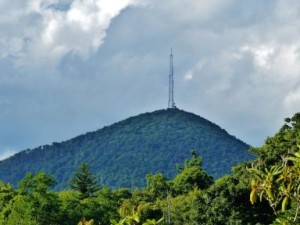No more than a thousand steps along the trail there is a hollow tree the width of a wide-shouldered man. It leans off the path with a precarious laziness that is somehow intriguing still now as it was when we first hiked this path years and years ago. When I was about ten years old I could still fit in between the arms of the wide-shouldered man, cram my body into the hollow tube of what was once its core. Sound is different in a hollow tree, the whole world closes in around you in a woody hug and the reverberation of the world is dampened by the loving carapace corpse of the tree.
Death is a form of love, too. Humans are busy every day trying to ward it off with whatever they have at hand, but this is perhaps not as noble of a cause as we think. Perhaps Saul was right in driving the necromancers away from his city, almost certainly Briar Rose’s father destroying every spindle in the land was a futile thing to do, if not an ultimately harmful one. There is peace in death. If anything we should pursue death on our own terms more than just the erasure of death all together. A dead tree is a great thing for the forest. A dead whale brings nutrients from the surface of the ocean to the great deserts of the floor, which allows new life to trickle upwards and enrich the entire ecosystem.
I remember my dad reading me a bedtime story around this time where a boy’s life was tied to the lifeforce of a candle somehow, and instead of burning it his mother hid it in a box, but every time she checked on it the candle was smaller and smaller, as if it was burning by itself, a kind of flameless, heatless burning, and her boy grew sicker and sicker, until he died and the candle was nothing but a stub of wax. I’m not exactly clear on the moral of this story, but it seems like it has something to do with not trying to artificially prolong your life by avoiding life altogether. That it’s perhaps better to live a full, short life than a long, but unadventurous life?
This mountain was originally called Mount Elseetoss by the people who lived here before European colonists. The Cherokee people who were familiar with this mountain no doubt had entirely different landmarks than I did as a child. Probably the meadow at the top wasn’t a meadow, the trees that seemed special to me were not yet seedlings, the rock stairs hadn’t been put in by trail crews, and there certainly wasn’t a radio tower extending out of the mountain like an exponential continuation of its peak.

Perhaps though, the laurel canopy was still a laurel canopy, the large slab of stone we climbed on was still accessible, and (certainly) the peak was still the peak. I’m not sure if it was accessible hundreds of years ago, or if anyone knew about it until the hiking trail was widened, but I love to imagine children playing on the rock seven hundred years ago the same as I did seven years ago.